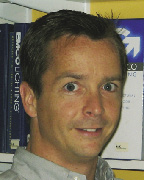For years, the focus of data center design professionals has been on reliability and overall systems availability. Today, reliability is a given. The new technology focus is on overall efficiency. The drive behind this new force is the realization, by large scale data center owners, that utility costs represent a major portion of their operating budget and these costs have been increasing at accelerating rates. Utility rates are on the rise, and overall consumption is increasing substantially as well.
According to a 2007 EPA report, U.S. data centers consumed a total of 60 billion kwh/year in 2006. Left unchecked, that number will grow to over 120 billion kwh by 2011. This represents nearly 2% of the total U.S. electricity usage. The EPA is pushing back and all parties intend to focus on efficiency and not only slow the growth of energy consumption but to reduce actual demand.
Today, the primary focus for data center design teams is a new metric referred to as Power Usage Effectiveness (PUE). In simplest terms PUE measures the percentage of power utilized by the data center that actually powers computer processors. A theoretical PUE of 1.0 means 100% of the electricity entering the facility is used to power computer processing. This is clearly impossible because power is needed for lights, HVAC and other systems. The goal of the design team is to minimize the power consumption of these other systems and to reach a more reasonable PUE in the range of 1.5 to 1.8.
The DOE's Energy Star Team estimates that the PUE of the average U.S. data center is well over 3.0 and many are over 4.0 or even 5.0. This means the average U.S. data center uses over 3kw of power to provide 1kw of power to a CPU.
So where is all this extra electricity going? It is powering old, inefficient HVAC equipment; it is powering fans that are unnecessary; it is cooling the room to a temperature that is way too cold; and it is powering inefficient non-Energy Star rated servers. Basically, the electricity is being wasted. Paid for and then used to power items that are not needed.
The focus of data center design teams is to eliminate this waste. Key design philosophies include utilizing new free cooling techniques; installing efficient Energy Star rated servers; specifying efficient chillers, CRACs and UPS systems; bringing the cooling closer to the source of heat; and right-sizing MEP systems because these run more efficiently at full load. Additionally, new software such as computational fluid dynamics systems created specifically for data centers also allow the design team to optimize the facility design.
According to the DOE, utilizing these design concepts for your next data center project can potentially cut your power usage in half. Whether your project is a new facility or a renovation of an exiting data center, these strategies can save you money.
Jack McCarthy is a registered professional electrical engineer with idGroup, Boston.
Tags:
Power Usage Effectiveness (PUE): The primary focus for data center design teams
January 22, 2009 - Construction Design & Engineering
 (1).jpg)








.png)